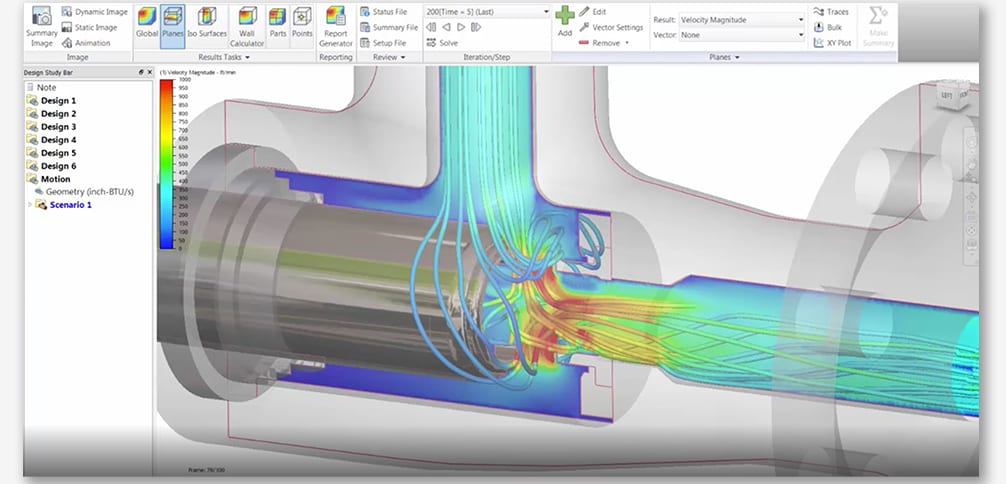

- Solidworks flow simulation motion for free#
- Solidworks flow simulation motion how to#
- Solidworks flow simulation motion update#
On the subject of sheet metal parts, these are now identified as such and the system automatically treats them as shell bodies by default (it can be overridden). Both can be done in the same study set-up and with the new comparison tools, inspected and interacted with in the same window. A good example is the ability to analyze a sheet metal part either as a solid or a shell mesh. This means that users can run the same set-up and boundary conditions on the same data, but use different mesh types to gauge the effects of different types of simulation. For example, there are no longer any restrictions of the mesh type used in simulation studies. Making the simulation process more flexible is something that’s a trend for this release. This means that mate conditions such as contact, shrink fit and bonding are defined once and reused in both motion simulation and structural analyses, so work doesn’t have to be repeated.
Solidworks flow simulation motion update#
When invoked, it asks questions (in plain engineering speak) about what it the user is trying to accomplish or simulate and guides them to the right options for that purpose, automatically setting up the parameters and variables of the study – which might not be immediately obvious.Īnother update that’s going to make the definition of studies much easier, particularly when working with complex assemblies is the transfer of assembly mating conditions to the simulation realm. To try and combat this, the Simulation Advisor has been introduced to act as the helping hand when setting up studies. Good engineers and designers have a wealth of knowledge about the products they design, but when taking those first steps into simulation, the translation of that knowledge into ‘FEA’ speak can be daunting and this is where errors arise. Moving into the 3D realm, something that SolidWorks has been doing over the past few releases is giving greater levels of automated support to those unfamiliar with simulation best practices. After all, the majority of mechanisms are essentially 2D (in terms of their functionality) and this makes huge sense – create a schematic that’s intelligent and using these tools prove out their operation before committing to developing the 3D geometry further. From 2009, those linked 2D assemblies can be used to create layout sketches and then to run simulations of how they would perform. The last few releases have let users scheme out mechanisms and such using very basic 2D geometry, as used with traditional methods. Rather than having a separate tab, simulation studies are now found (and interacted with) in a new panel below the part or assembly tree.Īt the ground level on the motion simulation side of things, you can now create animations and motion simulation studies using two-dimensional geometry. This is perhaps best in evidence with the removal of the CosmosWorks tab in the Property Manager.

This release continues the theme with greater integration of the simulation tools into the standard SolidWorks UI. The 2008 release saw the motion simulation tools combined and re-implemented with the animation interface, so you now have a single calling point for accessing both areas of functionality, which seem to work in concert much more than ever before.

Perhaps a good place to begin is with the changes to the simulation interface.
Solidworks flow simulation motion for free#
Some are available for free to all users in core SolidWorks, some are in the various Office products and then others are add-ons over and above that. What I’m going to attempt to do is pick out the highlights from several areas of the system, the reason being that there are different levels available to different users.
Solidworks flow simulation motion how to#
It might not sound like a biggie, but if you’re looking to switch on the add-on (as I was while writing this), that information will help you find it! Now, onto much more interesting things – how to simulate products better using this new release? For those already engaged with the simulation tools within SolidWorks, perhaps the first thing one will notice is that the CosmosWorks name has been dropped from the product offerings – it’s now known as SolidWorks Simulation.


 0 kommentar(er)
0 kommentar(er)
